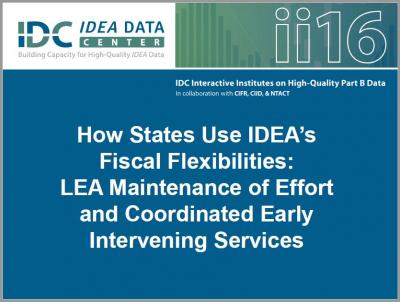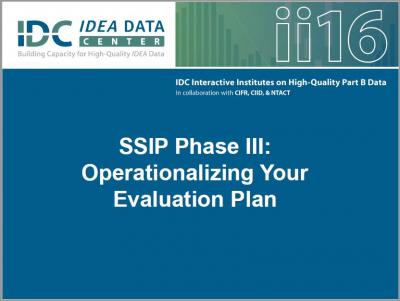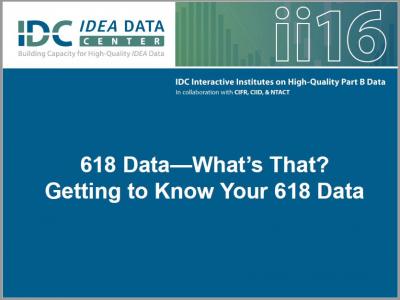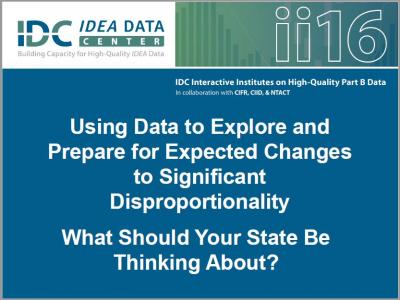Site Search
Results 197 - 203 of 355
Format: Presentations
How States Use IDEA's Fiscal Flexibilities: LEA Maintenance of Effort and Coordinated Early Intervening ServicesThe presentation provided an overview of LEA MOE and CEIS requirements, including the four new data collection elements implemented by OSEP. Presenters also provided information about areas of IDEA fiscal flexibilities that are available to states and discussed the fact that not many LEAs take advantage of these flexibilities. The flexibilities relate to the MOE reduction, CEIS, and their possible correlation to the SSIP.
Format: Presentations
Data Collection Decisions to Improve Data Quality for Quality Data UseThis presentation provided an overview of the challenges of data collection for IDEA Part B Indicator 14 and identified some successful efforts to overcome challenges such as representativeness and response rates. Additionally, presenters shared one state's effort to improve the quality of their student post-school outcome data to increase confidence in programmatic decisions that could be made from those data.
Format: Presentations
SSIP Phase III: Operationalizing Your Evaluation PlanDuring this interactive role-alike workshop for SSIP Coordinators, the IDC Evaluation Team helped participants refine SSIP evaluation plans, identify action steps and timelines for implementing evaluation activities, and learn about resources that may be helpful in operationalizing their evaluation plans. For the 2016 Conference on Improving Data, Improving Outcomes held August 15-17, this workshop was conducted with an updated presentation and handout.
Format: Presentations
618 Data—What’s That? Getting to Know Your 618 DataHave you heard these terms 618, 616, EDFacts, EMAPS, file specifications, OMB-MAX, GRADS360, Data Quality Reports? Do you understand what they are referencing? Do you want to gain a higher knowledge of these terms? Participants in this presentation learned more about IDEA data reporting requirements in relation to the 618 data collections. They also learned about data quality considerations and tools states can use when going through the data collecting and reporting procedures.
Format: Presentations
Moving From Bystander to Participant: Engaging State Leaders During Data IntegrationCIID is facilitating a workgroup of SEAs interested in improving engagement of state leaders in IDEA data integration efforts. For data integration to succeed, SEAs and state leaders must communicate ideas, goals, and objectives clearly across departments and to various stakeholder groups. This role-alike presentation for state directors and leaders provided an opportunity for state leaders to learn how to move from being a bystander to an active participant in data integration efforts. Participants learned more about critical times for engagement, ensuring communication and cooperation among state leaders who rely on data for decision making, and positive outcomes that result from integrating IDEA data.
Format: Presentations
The Hard Work of Collecting Data on Quality and ComplianceThis session provided an overview of the landscape of Part B Indicator 13 data collection across the nation. Presenters shared insights from the TA Center charged with analyzing this indicator and two states that have wrestled with examining the quality of services in the compliance monitoring process. Presenters shared data, lessons learned, and suggestions.
Format: Presentations
Using Data to Explore and Prepare for Expected Changes to Significant Disproportionality: What Should Your State Be Thinking About?To address the disparities experienced by minority students with disabilities, the U.S. Department of Education is proposing a new Equity in IDEA Rule. During this session, presenters used data examples to guide states through a series of questions regarding how the Notice of Proposed Rule Making might affect significant disproportionality calculations, analysis, and decision-making. Presenters also introduced IDC’s Success Gaps Toolbox, which can help states and local school districts in determining root causes of significant disproportionality.








